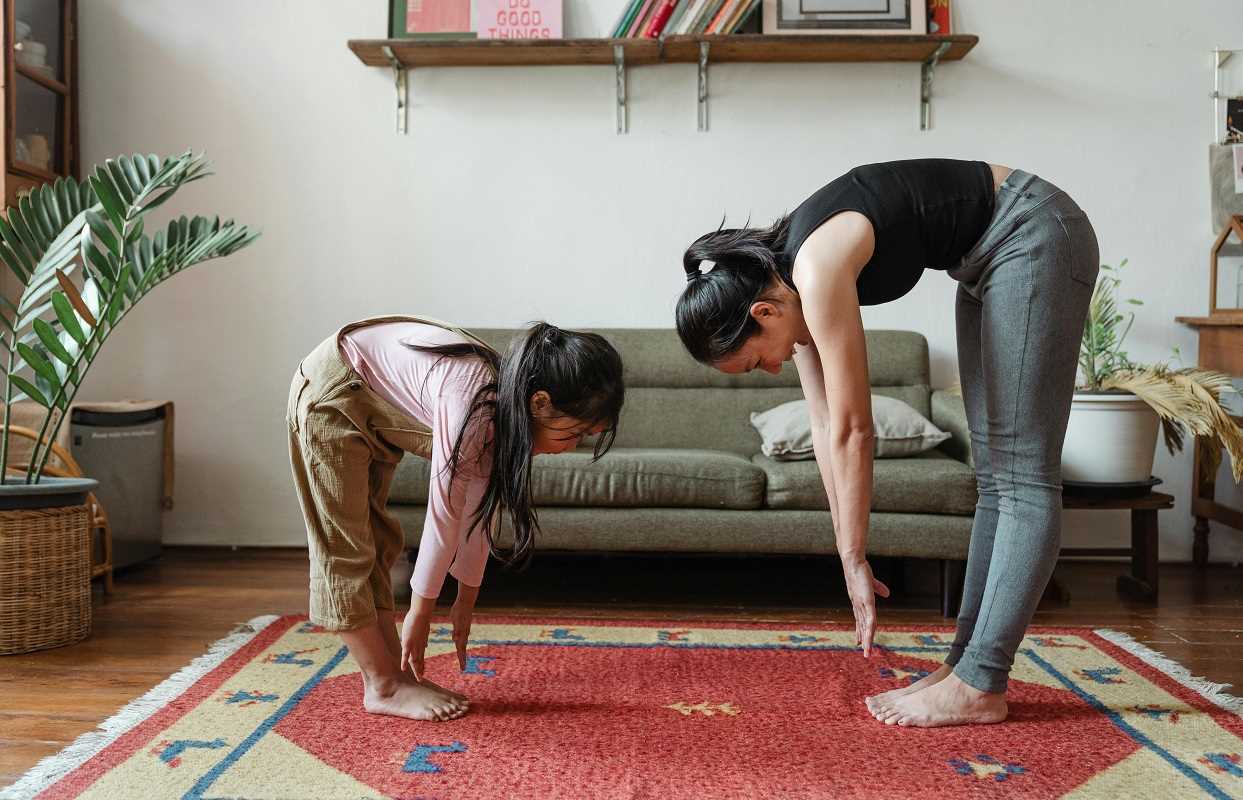Sunny mornings often shape the mood for the whole household, and a simple daily stretching routine brings everyone together for a positive start. Taking just a few minutes to stretch allows each person to find moves that suit their unique flexibility and comfort. These gentle exercises help loosen up muscles, prepare bodies for action, and create a shared moment before the day’s activities begin. Each stretch can improve confidence as kids get ready for school and adults tackle chores or plan family outings. As muscles warm up and spirits rise, everyone feels prepared and connected, making even the busiest days run a little smoother.
Clear Steps to Improve Flexibility Every Day
- The gentle reach-and-breathe approach invites bodies to open gradually without strain. You guide limbs through slow, controlled lifts and holds, easing tension around shoulders and hips. Encourage five deep breaths at each hold to synchronize effort and breath, fostering calm focus before transitioning to the next move. This method demands no equipment and fits into any corner of a home.
- Adding side bends into short breaks enhances lateral mobility in spines and obliques, which often get overlooked during desk work or homework sessions. Stand with feet hip-width apart, inhale upward reach, exhale into a side bend, and repeat three times each side. Use a wall for balance if needed for stability and confidence.
- Pairing dynamic hamstring swings and gentle leg kicks in the hallway keeps legs feeling springy for back-to-school routines or weekend hikes. Hold a wall or stair railing lightly for support, swing each leg forward and back ten times, allowing a natural oscillation. This activates muscle fibers and blood flow without needing a full gym session.
- Rolling shoulders back and forth while seated during breakfast helps reduce neck and upper back stiffness, especially after early alarms. Lift each shoulder toward ears, circle slowly back and down in five rotations, then reverse direction. This micro-break motion fits into any table-bound morning routine and refreshes posture before heading out.
- Seated ankle circles at a kitchen counter or dinner table turn idle waiting moments into joint-lubricating opportunities. Lift one foot slightly and draw ten clockwise circles, then switch. This low-key step keeps ankles nimble for playground runs or grocery hauls, requiring no extra space or gear.
Basic Foundations for Personal Stretching Routines
- Warm-Up Sequence: prepare muscles and joints to prevent strains. Start by marching in place for one minute, followed by arm swings—five forward and five backward—to raise core temperature. Next, perform slow knee lifts toward chest for 30 seconds each side. This sequence needs zero equipment, suits all ages, and offers the insider tip to focus on smooth transitions to maintain steady breathing.
- Core Activation Flow: strengthen stabilizing muscles before deeper stretches. Lie on your back with knees bent, press lower back into the floor, then inhale while lifting one arm overhead for a gentle twist. Repeat on both sides eight times. It takes under five minutes, can be done on a yoga mat or carpet, and helps support lower back health. Tip: engage abs softly to protect the spine.
- Hip-Opener Routine: relieve tight hips from sitting during study or commutes. From a low lunge position, glide hips forward until you feel a stretch in front of the rear leg, hold for 20 seconds, then switch. Repeat twice per side. No tools needed; try on a carpeted floor to avoid discomfort. Insider advice: tuck the pelvis slightly under to deepen the release safely.
- Spine Extension Drill: combat slumped posture from screens. Stand upright, place hands lightly behind the head, inhale to arch back gently while lifting chest, then exhale back to neutral. Perform five reps with slow pacing. This demands only a wall for optional support and costs nothing. Tip: keep neck long to avoid compressing vertebrae.
- Full-Body Cooldown: combine all preceding elements into a seamless wrap-up. Move from a forward fold to a cat–cow cycle on all fours for ten rounds, then sit and hinge forward to stretch hamstrings for 30 seconds. Finish with shoulder shrugs and neck rolls. No equipment needed; total time under seven minutes. Insider tip: pair this cooldown with soft music to signal relaxation and closure of the session.
Create a Step-by-Step Plan for Custom Stretching
- Identify each person's needs by noting tight or sore areas each morning, then pick two stretches to target those spots.
- Choose a consistent time, like right after breakfast or before bedtime, to make the habit part of daily routines.
- Develop a rotating list of five to seven moves to keep things interesting: alternate hip openers, core activations, and spinal releases.
- Use simple props like a firm cushion or rolled towel for support during deeper holds, ensuring comfort without extra cost.
- Adjust hold durations weekly: start with 15 seconds and add five-second increments as flexibility improves.
Integrate Moves into Family Routines
Encourage siblings to compare their favorite stretches and share feedback during a quick evening check-in. This small discussion promotes teamwork and keeps everyone involved. Invite caregivers to demonstrate one new move each week to maintain excitement and give younger members visual guidance. Adding these check-ins after dinner or before evening TV time helps create consistency without feeling like another chore.
Turn post-dinner cleanup into a mini mobility circuit: reach overhead to grab dishes, then stretch into a low squat to unload the lower shelf. Switching between kitchen chores and stretch pauses turns routine chores into movement opportunities. This method uses existing daily flow, so families do not need to carve out extra time.
Monitor Progress and Keep Motivation High
Maintain a simple chart on the fridge listing selected stretches and checkboxes for completion. Seeing progress every morning encourages a sense of achievement. Encourage participants to color in or add stickers each day they finish—the visual record fosters friendly competition without judgment.
Set small goals like holding a new stretch ten seconds longer or adding an extra rep weekly. Celebrate milestones with rewards like a family walk in the park or a fun playlist during the next session. These little successes keep enthusiasm high and show that flexibility improves with regular effort.
Make Stretching a Natural Part of the Day
Personalize your stretching routine to fit daily habits, turning small pauses into lasting progress. When everyone joins in and tracks their growth, movement becomes a shared win. Start today for more flexibility, energy, and confidence—one stretch at a time.
 (Image via
(Image via





